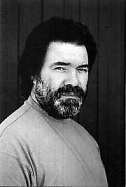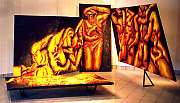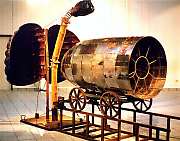Ashley Johnson
Artists
- Wim Botha
- Bob Cnoops
- Hugo Crosthwaite
- James de Villiers
- Sasha Fabris
- Gordon Froud
- Rookeya Gardee
- David Hlynsky (Canada)
Ashley Johnson
- Nkosinathi Khanyile
- Ania Krajewski
- Michael Matthews
- Nhlanhla Mbatha
- Rankadi Mosako
- Margi Scharff (USA)
- Diane Victor
DASART shows
Transmigrations - the show
Fokofo
Dasart Archives
I would like to approach this project from an African historical perspective. Before Western man began to explore Africa, it was indeed a dark continent. Oral traditions ensured that Western encroachment had to rely on painstakingly slow transcription by missionaries and explorers. A great many assumptions were made and the continent came to be viewed through Western cultural perceptions. Essentially, the Europeans believed they were bringing culture and progress to backward peoples. The Western literary tradition became part of the conquering process. And yet, when one reads accounts of those times, one is struck by the undying sameness of human nature. The heathen behaviors that the West regarded as cruel and barbaric, are repeated blithely by Western representatives in the occupied territories.
 It is my
thesis that a sub-text lurks beneath all human nature and infiltrates all relationships. I
would epitomize this as the personality of Kurtz from Joseph Conrad's book, Heart of
Darkness. This educated and sensitive man found himself within a foreign African culture
and also with the means to subvert it to his own ends. The idea that power corrupts is in
my view erroneous. The truth of the matter is that the will to power is indigenous to all
organisms on a biological level. Power and greed are basic life forces that reflect the
struggle for dominance. This biological struggle is also reflected in the phenomena of
Capitalism and the institutions it gives rise to in order to organize and manipulate
society. ( I should add that I see Communism as a sub-set of Capitalism, the main
difference being hierarchical structure.)
It is my
thesis that a sub-text lurks beneath all human nature and infiltrates all relationships. I
would epitomize this as the personality of Kurtz from Joseph Conrad's book, Heart of
Darkness. This educated and sensitive man found himself within a foreign African culture
and also with the means to subvert it to his own ends. The idea that power corrupts is in
my view erroneous. The truth of the matter is that the will to power is indigenous to all
organisms on a biological level. Power and greed are basic life forces that reflect the
struggle for dominance. This biological struggle is also reflected in the phenomena of
Capitalism and the institutions it gives rise to in order to organize and manipulate
society. ( I should add that I see Communism as a sub-set of Capitalism, the main
difference being hierarchical structure.)

Work 1 : Death of Lucas
This is a walk-in situational painting that recounts an event in my life. This event was the murder of a person called Lucas. It epitomises the mob justice that is so prevalent in South Africa. The painting was executed as a ritual expiation of guilt in that I was unable to stop the murder and became complicit in it by default.
Lucas was unknown to me and to the people who murdered him. Indeed even his transgression proved to be unfounded.
It began one Saturday morning as I was walking from my studio. I heard a crescendo of shouts and turned to see a man running desperately in front of a mob of about twenty men, women and children. He ran through my gate and confronted me, his eyes wide, pleading with me to save him. The crowd began to shout that he had killed someone. Before I could respond he darted past me and headed towards my home. I also began to pursue him. We cornered him in my vegetable garden and I realised that he was already wounded. I begged the mob to wait for the police but knives were drawn on both sides. The people began to throw rocks at him and eventually felled him with a flagstone. They dragged him off, apparently meaning to finish the job outside my property.
Lucas managed to free himself and made his last stand behind the swimming pool wall. In this confined area four men stabbed and hit him until he fell, not without causing some wounds of his own. As he lay, two men held his arms while a third stabbed him in the chest. He was possibly already dead but the mob dragged him off and repeated the killing almost ritualistically. One man even cut his shoe in half before they drifted away.
I was left guarding the corpse while the wails of his pregnant wife drew closer. His family and friends had been following in the wake of the vengeful mob.
Later that evening, after the ambulance and the police had finally arrived and departed, the father of Lucas approached me to take his son's wife to the maternity ward as they thought her labour had begun. Wending my way through the squatters' shacks I was overcome by the futility and desperation of it all.
On finding their home, I asked the woman's brothers what the cause of the fight had been. Apparently the wife had been seeing Lucas off on the bus to Soweto. On the way a man had accosted her and tried to drag her into the bushes. Lucas fought the man who produced a knife and both were wounded. The other man staggered off and collapsed at a shebeen (informal bar) where his friends were drinking. They thought he was dead and set about their vengeance. Lucas tried to escape but the mob hysteria grew so that even little children were trying to trip him as he ran.
The man who fought with Lucas did not die. Lucas's wife was turned away from the hospital as she was not in labour yet. This type of story is not unusual in South Africa where life and death are so close together on the scale that it is easy to mistake one for the other.
 Work 2 : The
Bullet
Work 2 : The
Bullet
This piece symbolizes the intercourse between Western Civilisation and Africa. The Industrial Revolution of the nineteenth century altered the balance of power in the world. Developments like the steam engine, quinine and modern rifles meant that new areas could be colonized. Africa was totally unprepared for the Imperialist onslaught of Western ideas and consequently has largely succumbed to a Western mode of thinking.
Our present-day environmental experience speaks of the need to reassess the rationales behind the Western philosophical perception of reality. New philosophies that address our notions of space and time are required to break the current mechanistic and object-based way of interpreting reality.
Scientific theories of Relativity must be coalesced with ancient systems of perception such as Aboriginal dream-reality and Bushman trance-reality. Western thinking needs to establish a symbiotic relationship with the environment so that we can build systems based on flux and mutability rather than static, moribund structures.
This will inevitably make the concept of the individual redundant. Identity will be assimilated into an environmental consciousness where environment and individual are unified, yet paradoxically also not.
The early twentieth century South African naturalist, Eugene Marais, had a very intriguing notion of the termite colony being a single organism, where the earth mound is the dead skin of the animal. He parallels the organs and functions within the human body to the structure of the nest and the separate functions of the different types of termite within it. In his view the queen is like a brain from which instructions seem to emanate. Although it is speculation, he does not see this communication as being a 'language' based on touch but rather a mysterious state of being-ness that causes all elements of the termite colony to co-ordinate efforts. We need to emulate the termites and learn to regard the Earth as our living skin.
The Bullet is made from scrap stainless steel and organic debris. The torso is constructed out of mesh, steel, fibreglass, coaldust and soil. It symbolises an earth-based animality that is reminiscent of many natural forms besides the human reference. The head is palm-tree core that has been carved by termites. The participation of the viewer in activating the piece ritualistically reinforces the idea that we are all implicated in the colonisation process.
Ashley Johnson
Top